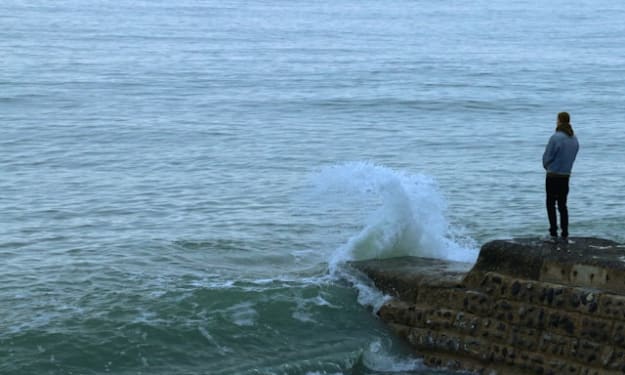
Jagged Claws
Jagged claws are a formidable feature of many animals, from felines to crustaceans to prehistoric dinosaurs. These sharp and pointed appendages can serve a variety of purposes, such as hunting, self-defense, or even climbing. For instance, the jaguar's claws are retractable and razor-sharp, allowing the big cat to grip and dispatch prey efficiently. Similarly, the mantis shrimp's serrated claws can deliver devastating blows that stun or kill its prey. On the other hand, crustaceans like lobsters and crabs use their claws for both hunting and protection, as well as for manipulating objects and excavating burrows. Interestingly, some extinct creatures like the velociraptor and sabertooth tiger also had jagged claws that likely played a significant role in their survival and evolution. Overall, jagged claws are a remarkable adaptation that has evolved in many animal species, enabling them to excel in their respective habitats and niches.
Wildlife conservation involves the protection and preservation of animals and their habitats to maintain a natural balance in ecosystems, prevent extinction, and promote sustainable use of resources. This requires an interdisciplinary approach that includes ecology, population biology, genetics, behavioral ecology, and conservation biology. Ecologists study animal and plant interactions and migration patterns to develop conservation plans that prevent habitat degradation. Population biologists understand population dynamics to predict how populations respond to different conservation strategies. Geneticists study the DNA of species to protect genetic diversity and prevent inbreeding. Behavioral ecologists study factors that influence animal behavior to ensure the natural behaviors of animals are supported and to ensure the survival of species. Conservation biology is the application of ecological, genetic, and behavioral principles to the management of biodiversity. Technology such as remote sensing and drones are being used to monitor wildlife and gene editing techniques are being developed to protect endangered species.
The Science Behind Wildlife Conservation: An Overview
Wildlife conservation refers to the protection and preservation of animals and their habitats. The goal of wildlife conservation is to maintain the natural balance of ecosystems, prevent extinction, and promote the sustainable use of resources. The science behind wildlife conservation is complex, and various disciplines are used to achieve this goal. In this article, we will give an overview of the science behind wildlife conservation.
Ecology and Wildlife Conservation
Ecology is the study of the relationship between living organisms and their environment. It is a fundamental science in wildlife conservation because it helps scientists understand how animals and plants interact with their surroundings. Understanding these interactions is critical for conservationists to develop and implement strategies to protect wildlife.
For example, ecologists study the migration patterns of animals to understand where they move, what they eat, and what habitats they use. This information is essential for designing conservation plans that prevent the loss of wildlife due to habitat degradation.
Population Biology and Wildlife Conservation
Population biology is a discipline that focuses on the study of biological populations and their dynamics. It includes studying the factors that affect population growth, such as birth and death rates, migration, and predation.
Population biologists play a critical role in wildlife conservation by helping scientists understand how species populations change over time. They use mathematical models to predict how populations will respond to different conservation strategies.
For example, population biologists might use models to predict how a population of elephants would respond to increased poaching, habitat destruction, or changes in climate. This information would be used to develop conservation strategies to mitigate these threats.
Genetics and Wildlife Conservation
Genetics is the study of genes, heredity, and genetic variation. It is a crucial component of wildlife conservation because genetic diversity is critical for the survival of species
Genetic diversity helps ensure that a population can adapt to environmental changes and resist disease. It also plays a critical role in the long-term survival of a species by providing the raw material for evolution.
Geneticists study the DNA of different species to understand the patterns of genetic variation within populations. This information can be used to develop strategies to protect genetic diversity and prevent inbreeding that can lead to genetic disorders and weakened populations.
Behavioral Ecology and Wildlife Conservation
Behavioral ecology is the study of the evolutionary and ecological basis for animal behavior. It includes the study of factors that influence animal behavior, such as mating strategies, predator-prey interactions, and social behavior.
Behavioral ecologists play a critical role in wildlife conservation by studying how animals respond to environmental changes. For example, they might study how a species' behavior changes when faced with habitat loss, pollution, or climate change
This information is used to develop conservation strategies that support the natural behaviors of animals and ensure the survival of species.
Conservation Biology and Wildlife Conservation
Conservation biology is the application of ecological, genetic, and behavioral principles to the management of biodiversity. It is a cross-disciplinary field that seeks to understand, protect, and manage biological diversity at multiple levels.
Conservation biologists play a critical role in wildlife conservation by developing strategies to protect habitats, reduce threats to species, and promote sustainable use of natural resources.
Conservation biology is a relatively new field, and it is continually evolving. As conservation problems become more complex, conservation biologists are increasingly collaborating with social scientists, economists, and policymakers to develop effective conservation strategies.
The Role of Technology in Wildlife Conservation
Technology plays an increasingly important role in wildlife conservation. For example, remote sensing technologies such as satellite imaging can help conservationists monitor habitat loss, migration patterns, and other critical information.
New technologies are also being developed to help conservationists manage threats to wildlife. For example, drones can be used to monitor the movement of poachers or detect changes in animal behavior.
Advancements in genetic technologies are also providing new opportunities for conservationists to protect endangered species. For example, scientists are using gene editing techniques to modify the DNA of certain species to make them more resistant to disease.
Conclusion
In conclusion, wildlife conservation is a complex field that requires an interdisciplinary approach. Ecologists, population biologists, geneticists, behavioral ecologists, and conservation biologists all play important roles in developing strategies to protect wildlife and their habitats.
Advancements in technology and our understanding of the science behind wildlife conservation are providing new opportunities for conservationists to protect endangered species and their habitats. As we continue to learn more about the natural world, we must use this knowledge to develop sustainable strategies to protect biodiversity for generations to come.
About the Creator
Sanjeevi
Enchanting tales spun by a creative mind, intertwining imagination and reality. Stories that captivate, inspire, and transport you to extraordinary realms.






Comments
There are no comments for this story
Be the first to respond and start the conversation.